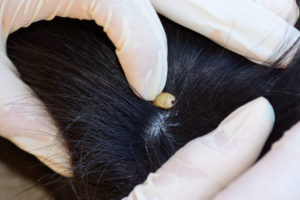Flea and Tick Prevention for Dogs
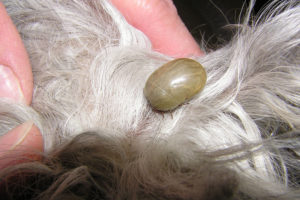
First and foremost, if you don’t provide flea and tick prevention for your dogs in the form of medication prescribed by a veterinarian, your dog has the potential to create a severe infestation of fleas or ticks in your home in just a few short weeks. It can happen that fast. Safe and effective flea and tick medication is easy to obtain from a vet and is relatively inexpensive. Fleas and ticks often carry diseases and parasites that can quickly spread to your dog or cat and present grave health risks, making a proper flea and tick preventive protocol essential for both you and your feline or canine companion’s overall health, quality of life, and safety.
Fleas and ticks cause a number of health problems in dogs and cats as well as humans, including:
- Skin inflammation, irritation, and secondary infections
- Transmission of potentially life-threatening diseases (including Rocky Mountain Spotted Fever, Plague, Lyme, and others)
- Transfer of intestinal parasites
- Psychological distress from constant intense itching
We recommend avoiding over-the-counter flea and tick products due to potential issues with both efficacy and safety. In particular, some products sold for dogs can be very dangerous to cats.
If you suspect your dog or cat is infested with fleas or ticks, please call us to schedule a veterinary appointment immediately. Our veterinarians know that flea and tick infestations can be frightening and overwhelming, but we have the training and experience to treat them effectively. Call to schedule an appointment today with one of our veterinarians to discuss which flea and tick treatment option is best for your dog or cat.
How do dogs get fleas or ticks?
Fleas and ticks are found throughout every part of the US and carry many potential health threats to dogs and humans alike. Flea and tick activity fluctuates seasonally, and although most flea and tick exposure occurs during the spring and summer months, it is possible for dogs to pick up fleas or ticks well into the winter months as well. Fleas and ticks will die or become dormant in cold climates during the winter, but if they make their way inside before then, they can thrive in our homes.
Cats and dogs are at equal risk for picking up fleas, but dogs seem to contract them more than cats because they typically spend more time outdoors than cats do on average. This also explains why outdoor dogs and cats have a much higher risk of picking up fleas than pets confined to an indoor living environment. Although they can sometimes establish an indoor infestation, the vast majority remain in their outdoor habitat.
How did my dog or my home get infested with fleas or ticks?
First and foremost, if your dog is not on a preventative flea and tick medication prescribed by a veterinarian, your dog has the potential to create a serious infestation of fleas or ticks in your home in just a few short weeks. It can happen that fast. Flea and tick medication is easy to obtain from a vet and is relatively inexpensive.
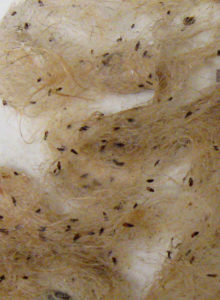
Fleas and ticks often carry diseases and parasites that can easily spread to your dog and present very serious health risks, making a proper flea and tick preventive protocol extremely important for both you and your canine companion’s overall health, quality of life, and safety.
Once a flea takes up residence on your dog, it will remain there until it dies, either naturally or from a flea medication prescribed by a veterinarian. The dog’s body provides fleas and ticks with all of the elements they need to survive and thrive including food, shelter, and the perfect environment to reproduce and lay eggs.
Fleas and ticks can cause a wide variety of health problems in dogs as well as humans, including:
- Skin inflammation, irritation, and secondary infections
- Transmission of potentially life-threatening diseases (including Rocky Mountain Spotted Fever, Plague, Lyme, and others)
- Transmission of intestinal parasites
- Psychological distress from constant intense itching
Just through touching and sharing a living space with an infested dog, a human can contract a number of concerning diseases. This is just another reason why it’s so critical that you take measures to reduce the risk of a flea or tick infestation on your dog. With the right flea and tick prevention plan provided by your veterinarian, the risk of an infestation is easily removed.
Why you shouldn’t use over-the-counter flea and tick medications on dogs
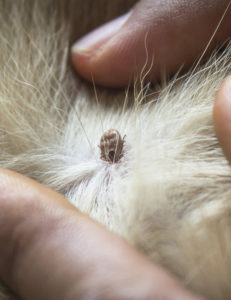
The number of over-the-counter flea and tick medications has increased exponentially over the last 20 years, and now there is a seemingly endless variety of flea and tick prevention products to choose from.
Starting in the early 2000s, adverse reactions to unapproved flea treatment for dogs, specifically spot-on treatments, caused the Environmental Protection Agency to issue a warning in 2010 regarding toxic reactions to flea medications. The warning was issued in response to a rash of fatalities among dogs from the use of several unapproved flea and tick prevention products.
If your dog hasn’t been inspected for fleas and ticks or hasn’t received flea and tick preventive medication from a veterinarian, please call us to schedule an appointment today. It is imperative the treatment method you choose for flea and tick prevention is safe and effective for both you and your dog.
Our veterinarians will determine the best flea and treatment to meet your dog’s individualized needs, and ensure he or she stays as happy and healthy as they possibly can.
How to identify a tick on your dog
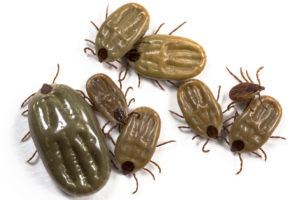
Ticks typically start off appearing as a small, dark brown, eight-legged insect when they first make their way onto a dog. Once a tick is on a dog, it uses tiny sharp teeth to embed its mouthparts firmly into the skin and begins feeding on the dog’s blood. As a tick ingests the host’s blood, its abdomen increases in size dramatically, and its head and legs may become difficult to see. During this feeding period, infectious organisms in the tick’s body are transmitted into the host’s bloodstream.
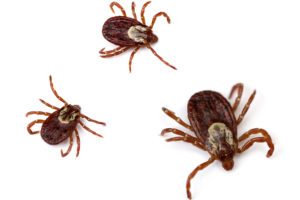
You can also spot the presence of ticks on your dog if you notice any small welts or bruises that look like bite marks, but generally it’s most common to find a tick that’s still attached and feeding on your dog.
How to tell if your dog has fleas
One of the best indicators of the presence of fleas on a dog is intense itching, scratching, and biting, especially directed at the lower back and hindquarters. Fleas are aggravatingly itchy, and if your dog is allergic to flea saliva (which many dogs are), the itch can be relentless.
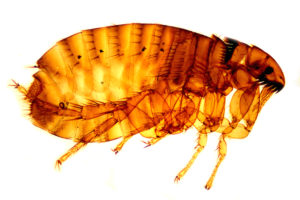
If your dog is allowed to continue to scratch the itch, this can often lead to skin trauma and infections, which aid in the further spreading of any diseases carried by the flea(s). Although fleas can be difficult to detect because of their near-microscopic size, tell-tale indications of a flea infestation on your dog will include:
- Red or irritated skin on your dog’s stomach, neck, or rear end
- Adult fleas, which appear as tiny red or brown specks moving through a dog’s hair
Flea and tick medication for dogs
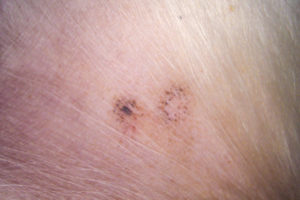
Flea and tick preventive treatment can be administered to dogs in three different ways.
These include:
Oral Tablets
Oral tablets are a great choice for both the prevention and treatment of fleas and ticks in dogs. Oral tablets are extremely safe, but they are a prescription drug and can only be obtained through a veterinarian.
Spot-On Flea Treatments
Spot-on flea treatments vary in kind and also in effectiveness. Spot-on flea treatments should be recommended by a veterinarian to meet your dog’s particular treatment requirements. If a spot-on flea treatment is right for your dog, one of our veterinarians will help you choose the most appropriate spot-on flea and tick treatment at your next veterinary appointment.
Tick Collars
We will occasionally recommend tick collars, but this is generally only necessary if your dog’s particular lifestyle calls for it. As with any question you have about your dog, ask your veterinarian if this would be a good treatment option for your dog at your next appointment. Our veterinarians are here to help, and we’re always happy to discuss flea and tick treatment methods with you to determine the best possible treatment plan for your dog.
Veterinary advice for flea and tick medication for dogs
Since 1981, the Animal Clinic of Billings has been helping our patients in the Billings area, and throughout Montana, stay free of harmful fleas and ticks. Anyone that spends enough time outdoors in Montana knows all too well just how easily ticks can make their way onto our dogs and ourselves. After all, Montana is certainly well-furnished with all of the conditions that allow fleas and ticks to thrive, which is why being proactive about prevention is so important.
Ensuring that proper preventive measures are taken prior to a problem arising will significantly improve your dog’s health and well-being, and can also save you time, money, and heartache.
SCHEDULE A FLEA AND TICK APPOINTMENT FOR YOUR DOG WITH US TODAY!
 If you suspect your dog is infested with fleas or ticks, please call us to schedule a veterinary appointment immediately. Our veterinarians know that flea and tick infestations can be terribly frightening and overwhelming, but we have the training and experience to effectively treat them. Call to schedule an appointment today with one of our veterinarians to discuss which flea and tick treatment option is best for your dog or cat.
If you suspect your dog is infested with fleas or ticks, please call us to schedule a veterinary appointment immediately. Our veterinarians know that flea and tick infestations can be terribly frightening and overwhelming, but we have the training and experience to effectively treat them. Call to schedule an appointment today with one of our veterinarians to discuss which flea and tick treatment option is best for your dog or cat.
406-252-9499 REQUEST AN APPOINTMENT


